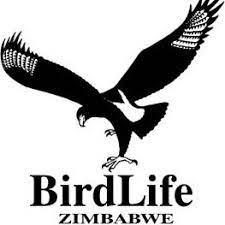IMPORTANT BIRD AREAS
Z013 Driefontein Grasslands
UNPROTECTED
GLOBAL IBA (Al)
19°23’S; 30°47’E
c. 20 000 ha
SITE DESCRIPTION
On the watershed, a little to the east of the geographical centre of Zimbabwe (Kwekwe), and on the border of the Masvingo and Midlands provinces, is an isolated patch of Kalahari Sands. On it is the Driefontein Mission with the two Driefontein dams, and close by, to the east, is the commercial farming community of Felixburg. The area is largely divided into commercial ranches which specialise in cattle, several mines around Felixburg itself, and Driefontein Mission which has a church, hospital, school, and agricultural crops.
This area, of about 200 km2, consists of rolling grassland at an altitude of 1 500 m a.s.1. The vistas are flat and seemingly endless. Most of the landscape is under edaphic highveld grassland, dominated by the thatching grass Hyparrhenia spp., which can grow to a height of 3 m. Soaks, seeps, and depressions collect water and form ‘dambos’ or vleis i.e. circumscribed marshy areas with rushes and sedges instead of grasses. There are many of these in the area, and the lack of relief dictates that water collects rather than runs away. The few streams, such as Nyororo and Shashe, are in grassland. There are scattered patches of the characteristic miombo woodland of the Mashonaland plateau, dominated by msasa Brachystegia spiciformis and mnondo Julbernardia globiflora. Owing to the general sufficiency of rainfall, averaging 800 mm p.a., there are areas of rain-fed maize agriculture and irrigated wheat in the austral winter. Temperatures are very equable, and frosts in winter are common.
BIRDS
The area supports approximately 85% of the Zimbabwean population of Wattled Crane Bugeranus carunculatus. Winter surveys of the district have located 25 pairs and large flocks of ‘floaters’, after good rainy seasons. In October 1989, a roost of 87 birds was present at one of the Driefontein dams. In July 2018, 84 Wattled Cranes and 115 Grey Crowned Cranes Balearica regulorum were recorded. A recent survey conducted in February 2022 recorded a total of 86 Grey Crowned Crane and 55 Wattled Cranes. Up to 40 pairs have been located in the larger area of the central watershed, Chivhu-Mvuma-Felixburg, which includes Driefontein. Generally, the cranes split into pairs when veld conditions are marshy, and they congregate during drier times when they forage in old maize and wheat lands.
The grassland and cattle ranching environment is benign for raptors, and more than 30 species occur. These include occasional sightings of Cape Vulture Gyps coprotheres, Pallid Harrier Circus macrourus and Lesser Kestrel Falco naumanni. Owing to the extent of the dambos, culminating in the large Widgeon Pan on the eastern edge of the area (19°23’S; 30°56’E), there is a good likelihood of Corn Crake Crex crex and Great Snipe Gallinago media (and even, perhaps, White-winged Flufftail Sarothrura ayresi). Whiskered Tern Chlidonias hybridus were recorded breeding in 1993. The grasslands are one of only two sites for breeding Melodious Lark Mirafra cheniana in Zimbabwe. Secretarybirds Sagittarius serpentarius are often found in the area.
CONSERVATION ISSUES
Almost the entire area is privately owned, except for some resettlement of rural residents north of the dam. The only threats to the Wattled Cranes include stress during drought years, residual pesticides on cereals, and disturbance by small boys. In November 1997, the government designated some of the commercial ranches for compulsory acquisition and redistribution.
The area is also a Ramsar site. In 2010, a Conservation Action Plan was developed for Wattled and Grey Crowned Cranes in Zimbabwe, focusing on the Driefontein Grasslands to ensure the protection of the species against threats such as fires, human and domestic animal encroachment causing habitat loss, and the changing climate. An Environmental Management Plan for Driefontein Grasslands (2017-2022) developed in 2016 also outlined conservation needs for the globally threatened bird species, their habitats and human needs.
There is controversy over the global population estimates of Wattled Crane Bugeranus carunculatus. Estimates vary from 7 500 to 14 500, emphasising that serious study is needed of the movements of this bird. Given the lower estimate, 25 pairs probably form 1% of the global breeding population, and the roost of 87 forms more than 1% of the global total population.
Globally threatened
* Cape Vulture – Breeding (pairs) – | Total Numbers – OV
* Lesser Kestrel – Breeding (pairs) – | Total Numbers – OV
Wattled Crane – Breeding (pairs) – 25 – 30 | Total Numbers – 50 – 90
Globally near-threatened
* Pallid Harrier – Breeding (pairs) – | Total Numbers – OV
* Kori Bustard – Breeding (pairs) – ? | Total Numbers – ?
RR & BRA | STATUS
Melodious Lark | Fairly Common
* – Species does not meet IBA threshold
RR & BRA – Restricted-range and Biome-restricted Assemblage
Br – Confirmed breeding
Br? – Suspected breeding
OV – Occasional visitor
Main Image credit: Grey Crwoned Crane by Roger MacDonald
